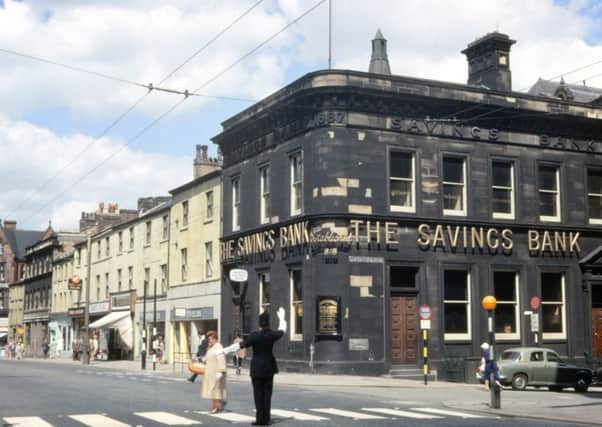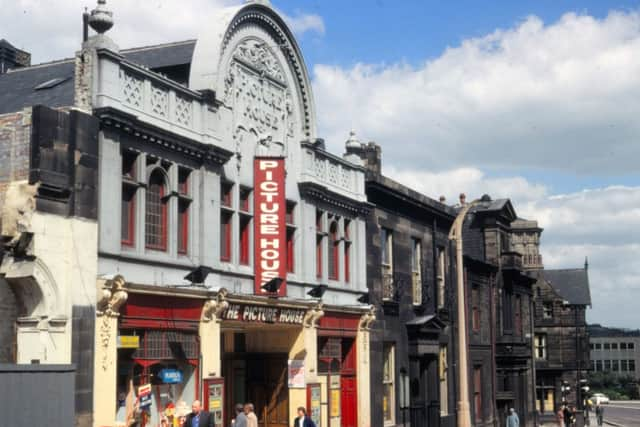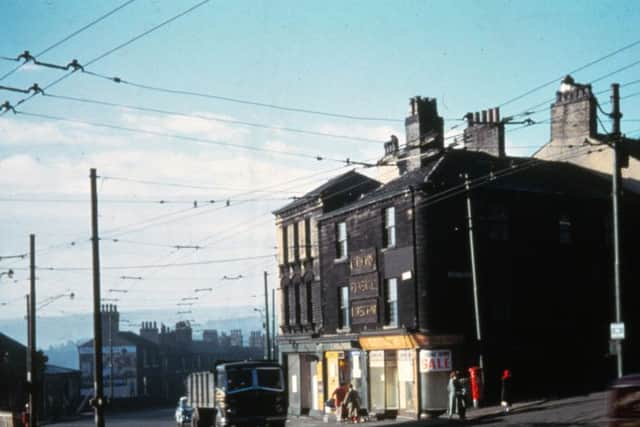Revealed: Huddersfield’s lost Victorian splendour


Hidden away for 20 years, the previously unpublished slides chronicle life in Huddersfield as it underwent a redevelopment revolution during the 1960s which saw the demolition – often controversially – of many buildings dating back to the Victorian era.
The 200 slides were taken during the 1960s, 1970s and 1980s by Clifford Stephenson (1903-1992), a senior councillor who played a key role in the planning and development of post-war Huddersfield.
Advertisement
Hide AdAdvertisement
Hide AdAfter he retired from public life, Mr Stephenson used the slides to give presentations but they have not seen the light of day for the best part of two decades, according to Chris Marsden, the chairman of Huddersfield Civic Society.


Mr Marsden described the Kodachrome colour sides as “magnificent” and in remarkable condition.
They had been kept safe by David Clarkson, a friend of Mr Stephenson, following his death and then came to the attention of Mr Marsden, who was working on a research degree on town centre redevelopment which focused on Huddersfield.
“The images are interesting and intriguing,” says Mr Marsden, who came to Huddersfield in 1970.
Advertisement
Hide AdAdvertisement
Hide Ad“They look magnificent and I never expected to see them – I thought they had been lost. I was a bit frustrated because I had already got my master degree when I saw the images. I suspect there are more out there because 200 slides in two boxes seems too neat.”


The photographs have added interest because of Mr Stephenson’s role in the redevelopment of Huddersfield town centre – which remains controversial to this day.
Many people still remember the old market building which was demolished in 1970.
“He was key to the post-war development of Huddersfield as chairman of the central area redevelopment committee, which was key in moving through the changes. People are still bitter about the market.
Advertisement
Hide AdAdvertisement
Hide Ad“Some people hold him responsible for the loss of the market but I don’t think that is entirely fair because it wasn’t his proposal, although he did support it.”
Before the town centre modernisation, Mr Stephenson had spoken about the narrow streets being suitable only for horse and carts.
He was, says Mr Marsden, interested in the old and the modern and advocated the purchase of the magnificent Huddersfield railway station by the town’s corporation – which the authority still owns today.
All well as slides of the town centre, there are others which cover nearby areas such as Aspley and settlements such as Almondbury.
Advertisement
Hide AdAdvertisement
Hide Ad“The slides reveal several of Stephenson’s interests, including maps, Almondbury’s history, Aspley, ancient buildings and his passion for the planning of our town centre. He was an advocate for both economic regeneration and architectural conservation and at times the two were irreconcilable.”
“The photos include street scenes and buildings that many of us will have either have a distant or no direct memory of.”
Mr Marsden said the preservation of the slides was down to the Stephenson family friend David Clarkson, local historian David Griffiths and Dr Jeremy Macafee, executor of the Stephenson estate who granted copyright of the images to Huddersfield Civic Society.
The slides are now with West Yorkshire Archive Service’s base at Huddersfield Library.
Advertisement
Hide AdAdvertisement
Hide AdCaroline Knight, of the Archives Service, said the photos were a “wonderful” archive depicting changes in 20th century Huddersfield.
Mr Stephenson himself was a fascinating man in his own right, she added.
Born in 1903, he attended King James’s School in Huddersfield and at the age of 21 opened a wireless shop. He built up a chain of shops and was founder member and later chairman of the Radio and Television Retailers’ Association.
He had a 37-year link with Huddersfield soft drink firm Benjamin Shaw and Sons, which began when he was appointed a director to succeed his father in 1948.
Advertisement
Hide AdAdvertisement
Hide AdMr Stephenson served on the former Huddersfield Council for 19 years and was first elected in 1955. During his last 15 years in politics he served on 21 committees at national level.
Chris Marsden will give a presentation about the slides at 7.30pm on Tuesday, February 4, at Huddersfield Town Hall. The event is open to all.